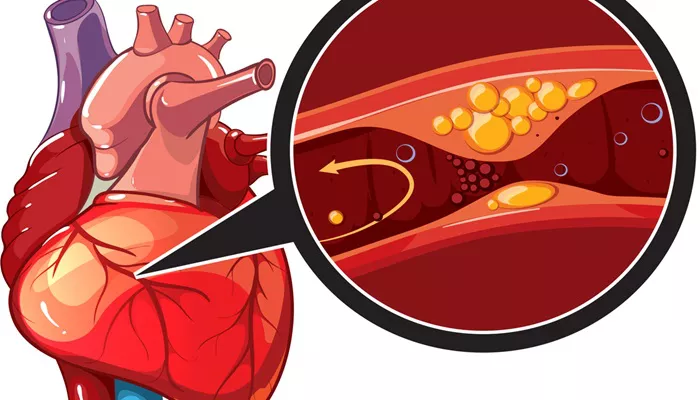Hyperlipidemia is a condition characterized by abnormally high levels of lipids (fats) in the blood. These lipids primarily include cholesterol and triglycerides. While some lipids are necessary for normal bodily functions, excess levels can lead to serious health issues, particularly affecting the cardiovascular system.
Types of Lipids Involved
The two main types of lipids involved in hyperlipidemia are:
Cholesterol: This waxy substance is essential for building cells and producing certain hormones. Cholesterol is carried through the bloodstream by lipoproteins. There are two main types of lipoproteins:
Low-Density Lipoprotein (LDL): Often referred to as “bad” cholesterol, high levels of LDL can lead to the buildup of plaque in the arteries, a condition known as atherosclerosis.
High-Density Lipoprotein (HDL): Known as “good” cholesterol, HDL helps remove LDL cholesterol from the arteries.
Triglycerides: These are the most common type of fat in the body, stored in fat cells and used for energy. High levels of triglycerides can also contribute to atherosclerosis.
The Impact of Hyperlipidemia on The Heart
Hyperlipidemia poses several risks to heart health, primarily through its contribution to atherosclerosis and subsequent cardiovascular diseases.
1. Atherosclerosis
Formation of Plaque
When there is an excess of LDL cholesterol in the blood, it can accumulate on the walls of arteries. Over time, these deposits, known as plaques, can harden and narrow the arteries, restricting blood flow to the heart and other parts of the body. This process, called atherosclerosis, is a significant contributor to cardiovascular diseases.
Inflammatory Response
The buildup of LDL cholesterol in the arterial walls triggers an inflammatory response. Immune cells attempt to digest the LDL, but often fail, becoming foam cells that contribute to the growing plaque. This inflammation further exacerbates arterial narrowing and can lead to the rupture of plaques.
SEE ALSO: 5 Antilipidemic Drugs Commonly Used to Treat Hyperlipidemia
2. Coronary Artery Disease (CAD)
Restricted Blood Flow
When atherosclerosis affects the coronary arteries, which supply blood to the heart muscle, it can lead to coronary artery disease (CAD). This condition reduces the flow of oxygen-rich blood to the heart, especially during physical exertion or stress.
Angina
A common symptom of CAD is angina, a type of chest pain caused by reduced blood flow to the heart muscle. Angina can be stable, occurring predictably with activity, or unstable, occurring unpredictably and signaling a higher risk of heart attack.
3. Heart Attack (Myocardial Infarction)
Plaque Rupture and Blood Clots
A heart attack occurs when a plaque within a coronary artery ruptures, leading to the formation of a blood clot. This clot can completely block the artery, cutting off the blood supply to a part of the heart muscle. Without oxygen, the affected part of the heart muscle begins to die.
Symptoms and Consequences
Common symptoms of a heart attack include severe chest pain, shortness of breath, nausea, and sweating. The extent of damage to the heart muscle depends on the size of the area affected and the duration of the blockage. Severe heart attacks can lead to heart failure or sudden cardiac arrest.
4. Heart Failure
Chronic Insufficiency
Heart failure occurs when the heart cannot pump enough blood to meet the body’s needs. Chronic hyperlipidemia contributes to heart failure by promoting the development of CAD and increasing the risk of heart attacks, which weaken the heart muscle.
Left and Right Heart Failure
Heart failure can affect the left side, right side, or both sides of the heart. Left-sided heart failure leads to fluid buildup in the lungs (pulmonary edema), causing shortness of breath and fatigue. Right-sided heart failure causes fluid retention in the legs, abdomen, and other organs.
5. Arrhythmias
Disrupted Electrical Activity
Hyperlipidemia can also affect the heart’s electrical system, leading to arrhythmias—abnormal heart rhythms. The inflammation and scarring from atherosclerosis can disrupt the electrical signals that coordinate the heartbeat, causing it to beat too fast, too slow, or irregularly.
Types of Arrhythmias
Atrial Fibrillation: A common arrhythmia where the heart’s upper chambers (atria) beat irregularly and out of sync with the lower chambers (ventricles). It increases the risk of stroke and heart failure.
Ventricular Tachycardia: A fast, regular beating of the ventricles that can progress to ventricular fibrillation, a life-threatening condition where the ventricles quiver instead of pumping blood effectively.
Managing Hyperlipidemia to Protect Heart Health
Lifestyle Modifications
One of the most effective ways to manage hyperlipidemia and reduce its impact on heart health is through lifestyle changes:
Diet: Adopting a heart-healthy diet low in saturated and trans fats, cholesterol, and refined sugars can help lower LDL cholesterol and triglycerides. Foods rich in fiber, omega-3 fatty acids, and antioxidants are beneficial.
Exercise: Regular physical activity helps improve cholesterol levels, reduce blood pressure, and maintain a healthy weight.
Weight Management: Losing excess weight can significantly lower triglycerides and improve overall lipid profiles.
Avoiding Tobacco and Alcohol: Smoking cessation and limiting alcohol intake can improve heart health and lipid levels.
Medications
For many individuals, lifestyle changes alone may not be sufficient to control hyperlipidemia. Medications can play a crucial role in managing lipid levels:
Statins: These drugs are the most commonly prescribed for lowering LDL cholesterol. They work by inhibiting an enzyme involved in cholesterol production in the liver.
Fibrates: Used primarily to lower triglycerides, fibrates also help increase HDL cholesterol.
PCSK9 Inhibitors: These newer drugs can significantly lower LDL cholesterol by increasing the liver’s ability to remove it from the blood.
Niacin: This vitamin can lower LDL and triglycerides while raising HDL cholesterol, but its use is limited due to potential side effects.
Conclusion
Hyperlipidemia is a major risk factor for cardiovascular diseases, significantly impacting heart health through the development of atherosclerosis, coronary artery disease, heart attacks, heart failure, and arrhythmias. Managing hyperlipidemia through lifestyle changes, medications, and regular monitoring is crucial in reducing these risks and maintaining a healthy heart.


